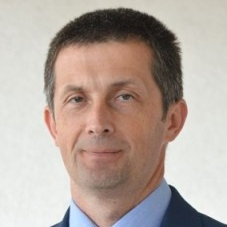Geoparks as a Form of Tourism Space Management
A special issue of Land (ISSN 2073-445X).
Deadline for manuscript submissions: closed (30 November 2022) | Viewed by 33717
Special Issue Editor
Interests: hillslope geomorphology; geochemistry; heavy metals; geotourism; geoheritage; landscape ecology; soil and gully erosion
Special Issues, Collections and Topics in MDPI journals
Special Issue Information
Dear Colleagues,
In recent years, in many parts of the world, an intensive development of tourism based on the values of geoheritage has been observed. This phenomenon should be assessed positively due to the fact that geotourism is not a form of mass tourism and therefore creates the possibility of sustainable development of certain areas, without threatening the values of their environment. Geotourism is implemented mainly on the basis of geoparks. Their international importance increased significantly after the approval of the UNESCO Global Geopark concept in 2015. At that time, the necessity of holistic management of geosites and landscapes, which can be realized within geoparks, was recognized. Their important function is the education of tourists in the field of Earth sciences, based on geological exposures, landforms, and viewpoints occurring in their areas. An additional advantage could be the presence of archaeological, ecological, historical, and cultural values in these areas. The increase in tourist traffic can also be an opportunity for the economic development of areas that have not been visited in large numbers so far. A necessary condition is the proper spatial planning and management of the space used by tourists and the preparation of appropriate infrastructure. Geoparks can therefore be treated as functional areas—spatial structures consisting of functionally related areas with uniform development goals.
This Special Issue welcomes papers focusing on topics including (but not limited to) the following:
- Development of geopark networks in individual countries;
- Assessment of the impact of geotourism on the use of landscapes;
- The role of spatial planning in geotourism;
- Good practices in geopark management;
- Problems of education in the field of geoheritage.
Prof. Dr. Wojciech Zgłobicki
Guest Editor
Manuscript Submission Information
Manuscripts should be submitted online at www.mdpi.com by registering and logging in to this website. Once you are registered, click here to go to the submission form. Manuscripts can be submitted until the deadline. All submissions that pass pre-check are peer-reviewed. Accepted papers will be published continuously in the journal (as soon as accepted) and will be listed together on the special issue website. Research articles, review articles as well as short communications are invited. For planned papers, a title and short abstract (about 100 words) can be sent to the Editorial Office for announcement on this website.
Submitted manuscripts should not have been published previously, nor be under consideration for publication elsewhere (except conference proceedings papers). All manuscripts are thoroughly refereed through a single-blind peer-review process. A guide for authors and other relevant information for submission of manuscripts is available on the Instructions for Authors page. Land is an international peer-reviewed open access monthly journal published by MDPI.
Please visit the Instructions for Authors page before submitting a manuscript. The Article Processing Charge (APC) for publication in this open access journal is 2600 CHF (Swiss Francs). Submitted papers should be well formatted and use good English. Authors may use MDPI's English editing service prior to publication or during author revisions.
Keywords
- Geotourism
- Geoheritage
- Geoconservation
- Geoparks
- Spatial management
- Sustainable development
Benefits of Publishing in a Special Issue
- Ease of navigation: Grouping papers by topic helps scholars navigate broad scope journals more efficiently.
- Greater discoverability: Special Issues support the reach and impact of scientific research. Articles in Special Issues are more discoverable and cited more frequently.
- Expansion of research network: Special Issues facilitate connections among authors, fostering scientific collaborations.
- External promotion: Articles in Special Issues are often promoted through the journal's social media, increasing their visibility.
- e-Book format: Special Issues with more than 10 articles can be published as dedicated e-books, ensuring wide and rapid dissemination.
Further information on MDPI's Special Issue polices can be found here.
Related Special Issue
- Geoparks as a Form of Tourism Space Management II in Land (3 articles)





